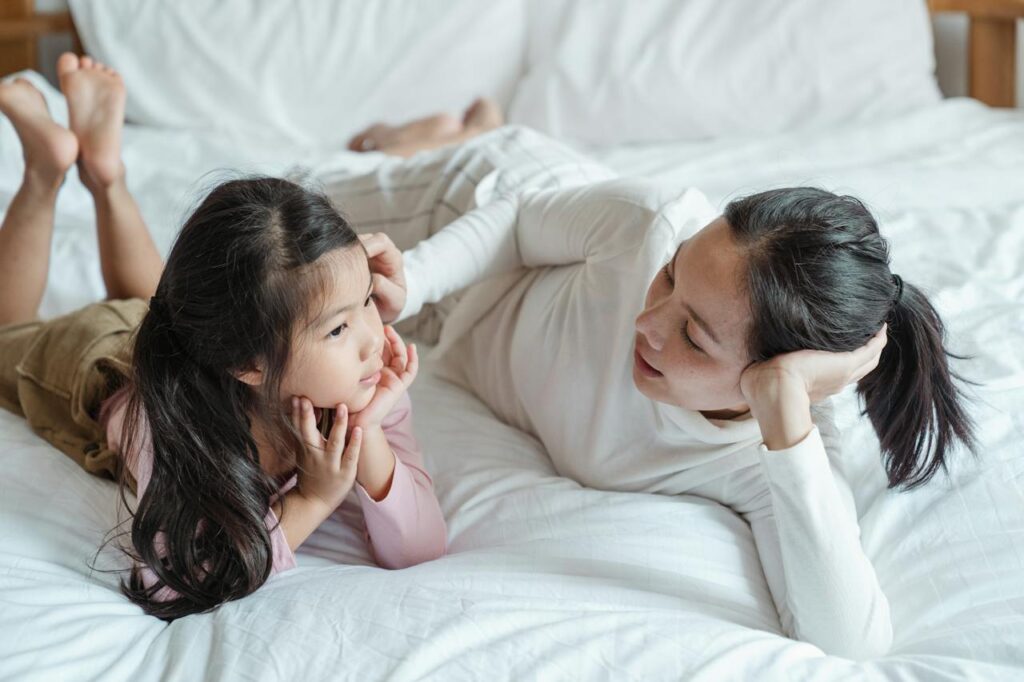29 Storytelling and Personal Narrative

How do memories form in interaction with others in sociocultural contexts? Of course, as with all cognitive processes, interactions are central to how memory develops, and understanding our role and the various ways in which memory can be supported is a fundamental part of working with young children.
Cultural tools and artifacts are also used in interactions with young children to support their memory development in a given culture. Cultural tools can be symbol systems related to language (e.g., words, written forms) as well as math or computation (e.g., abacus, ruler). Similarly, a personal narrative is also a cultural tool (Fivush, 2022).
Jerome Bruner (1991) proposed that all human societies interpret or make sense of their experiences through telling stories. We tell personal stories to understand our experiences and generate stories to preserve history and encode what is meaningful in our culture. Think about the best way to remember information — if it forms a story, it becomes more meaningful, and as it turns out, meaning is key to memory.
Many factors support our memory formation and have been studied in young children: repeated exposure, labelling, adult conversations, stories and many other events and practices embedded in daily life. Adams-Price and Reece (1986) did an emic study of a childcare centre in which they identified the myriad ways in which memory development was supported in tasks that we would not typically associate with memory development, including talking about events, answering requests, singing songs, rhyming, and telling stories.
Many researchers, including myself, have studied children’s storytelling (or narrative, as we tend to say when a story is about oneself and one’s own experience). Personal narratives have been studied in young children worldwide, offering a window into how we remember events in our lives and supporting the development of both short- and long-term memory.
Personal narratives also offer rich cultural and developmental information about links between life experiences and cognitive, social and emotional development (Fivush, 2022). While personal (or autobiographical) narrative involves the kind of episodic memory that Tulving proposed (as cited in Fivush, 2022), Fivush argues that the central position that the “self” holds in a personal narrative makes it unique. Furthermore, children’s very understanding of their own perspectives and experiences emerges through personal narrative (a point we will revisit in Chapter 7 on social cognition).
Research in storytelling practices has shown:
- The way parents narrate day-to-day life has an impact on how well children are able to narrate years later, and this is observable across different cultures (Fivush, Habermas, Waters and Zaman, 2011; and others).
- The structure of children’s stories has been associated with more accurate memories of the original events (Kulkofsky, Want and Ceci, 2008), suggesting that the story structure itself facilitates memory in young children.
- When parents talk with their children about past events using elaborative reminiscing techniques, their children can remember more details with more accuracy. In one study, mothers were trained to use open-ended elaborative questions, repetition, and confirmations while discussing past events with their toddlers; these toddlers remembered more detailed and accurate narratives than those whose mothers did not have this training (Reese and Newcombe, 2007).
Rhyming is very familiar to the field of early childhood education and the context of early learning. But rhyming also exists in song and many cultural folk traditions across the world. Have you ever imagined its role in memory development?
It is surprising that more work has not been done in this area, but one study in 1978 compared children’s memory for a story told in regular prose (non-rhyming) to the same story told in verse (rhyming). The researchers (Sheingold & Foundas, 1978) did not find a benefit for memory for the rhyming version among the Euro-American grade one children.
However, they also had the children do a sequencing task with cards that illustrated parts of the story. The children were better able to accurately sequence the story components when they heard the rhyming story than the non-rhyming story, so perhaps some aspect of the rhyming supported memory.

